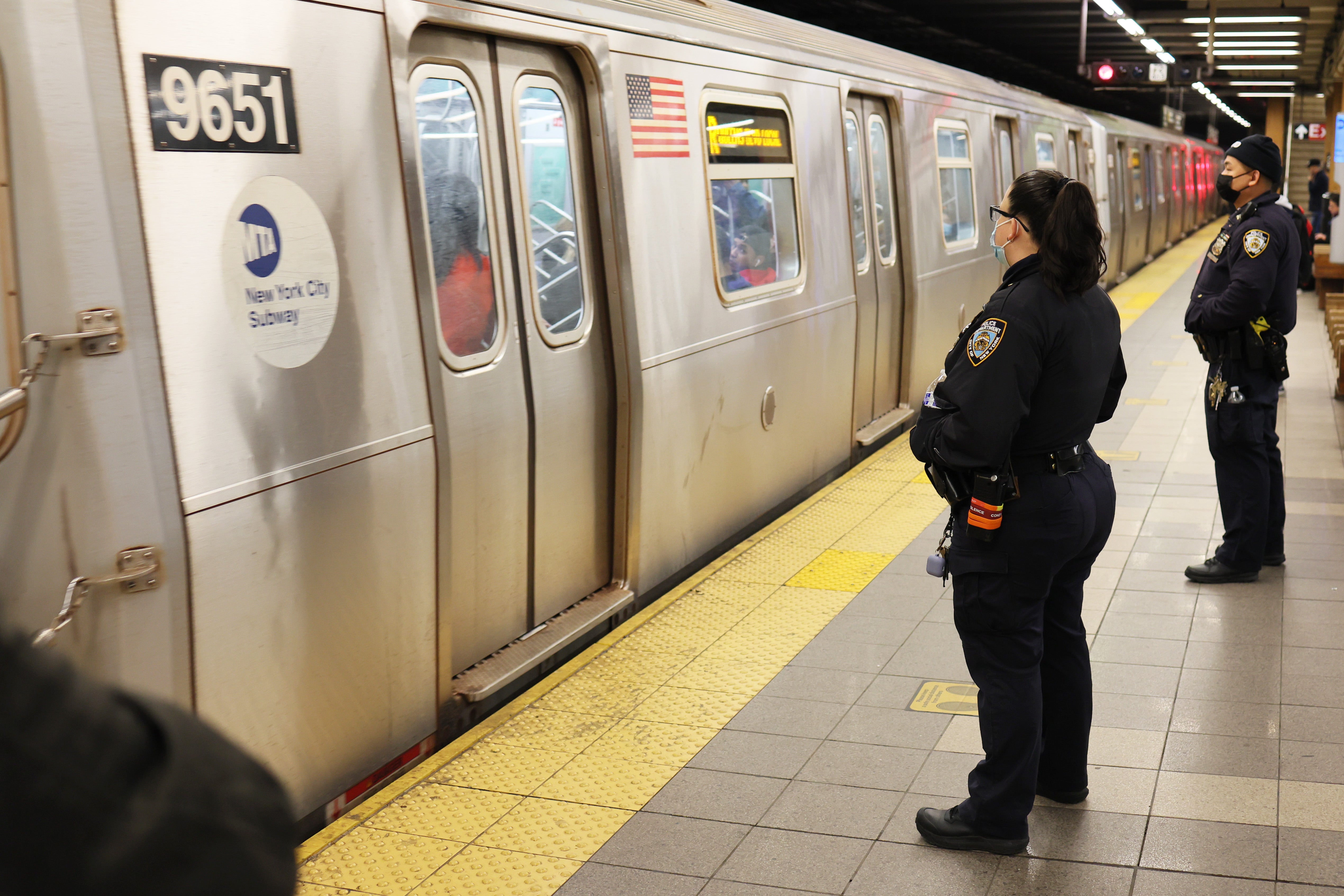The Independent's journalism is supported by our readers. When you purchase through links on our site, we may earn commission.
Why did it take NYPD so long to find the Brooklyn shooting suspect? The inconvenient answer
Within 12 hours of the shooting, Mayor and former police officer Eric Adams declared his intent to double the number of police on the subway. His announcement failed to note that he had already added 1,000 NYPD officers to the subway system during his first three months in office — bringing the total to 3,500 police officers who failed to stop Tuesday’s mass shooting

On the morning of Tuesday, April 12th at 8:30 a.m., a gunman on the subway in the Sunset Park neighborhood of Brooklyn, New York tossed two smoke canisters into a train car, before opening fire. Ten people were injured by the bullets and hospitalized, while upwards of 19 more were injured. In the immediate aftermath of the shooting, a panic spread across the city. New Yorkers texted friends, called family members, and anxiously checked the news for any update on the horror unfolding under our city. Meanwhile, around the subway station, a predictable scene unfolded: thousands of NYPD officers barricaded city blocks, descended underground, and spread out in search of the shooter.
Within 12 hours, Mayor and former police officer Eric Adams declared his intent to double the number of police on the subway. Yet, his announcement failed to note that he had already added 1,000 NYPD officers to the subway system during his first three months in office — bringing the total to 3,500 police officers who failed to stop Tuesday’s mass shooting. Not only that, but reports emerged in Rolling Stone of a police captain failing to stop trains from leaving the station, perhaps allowing the shooter to get away. So we are bought face-to-face with the fact that the NYPD, a police force totaling 36,000 uniformed officers, both failed to stop the shooting and allowed the shooter to leave the scene of the crime. It took a day and a half for the suspect, Frank R. James, to be arrested on Wednesday evening, after a Crime Stoppers tip that it appears James phoned in himself. He was reportedly taken into custody after being found wandering in plain sight round the East Village in central Manhattan.
One window through which we can understand why this massive police force was so ineffective in an emergency situation is the NYPD’s Strategic Response Group (SRG). Founded in 2015, the unit was theoretically intended to address terrorism and civil unrest. Yet, particularly in the two weeks since Mayor Adams announced his plan to sweep every homeless encampment in the city, it seems they’ve repeatedly been used to arrest homeless people and activists at these camps instead. Even the morning after the shooting, they were seen at a homeless encampment.
So what is the purpose of the SRG? Indeed, what is the purpose of police? In 2022, that’s a pertinent question. New Yorkers, and people across the world, saw countless videos of violent police repression during the summer of 2020. Footage of police brutality, specifically in the context of Black Lives Matter protests demanding an end to institutional violence, was shocking to those who believed police to be a force for good. In the long wake of the murder of George Floyd, and given the fact that US police still kill approximately 3 people daily, we come repeatedly back to that question: What is the actual purpose of policing? If they are not a force for good, what are the police doing — and why do we give them billions of dollars each and every year?
The actions of the SRG, and the NYPD in general, are instructive. Policing homeless people, and arresting hundreds of New Yorkers for trying to skip the $2.75 subway fare, starts to look particularly ridiculous when you take over 24 hours to find a mass shooter walking round one of the busiest areas of the city. Notably, someone sitting in a tent, or trying to dodge the subway fare, does not present a danger to society. So why are these people being targeted? Abolitionist Mariame Kaba’s response, on the “Call Your Girlfriend” podcast, is that, “The cops exist to control and contain particular groups of people for the interests of the ruling class and to protect the property of the ruling class and the state. That’s their function.” In New York, that control often looks like criminalizing poverty. It looks like policing people who can’t pay our skyrocketing rents and removing them from the streets of neighborhoods where property values are increasing rapidly, or policing people who can’t pay 3 dollars to ride the train.
We’ve been taught, explicitly by police and implicitly by dozens of cop shows, that police spend their time catching murderers. In reality, they devote 4 percent of their time to violent crime. As Alex Vitale, the coordinator of the Policing and Social Justice Project at Brooklyn College, said in an interview, “The vast majority of police officers make one felony arrest a year. If they make two, they’re cop of the month.”
And New Yorkers see this daily. We see police playing on their phones while they lounge around subway stations; we see them unmasked in our stores; and we see them parked in our bike lanes, always ignoring our requests to change their behavior. So when the Mayor says he plans to double the number of police officers in the subway, New Yorkers are right to be skeptical. We know too well how they don’t keep us safe, from mass shootings or otherwise. And we know that real answers like housing, mental health provisions, and education might actually help us build a safer, less violent world.
